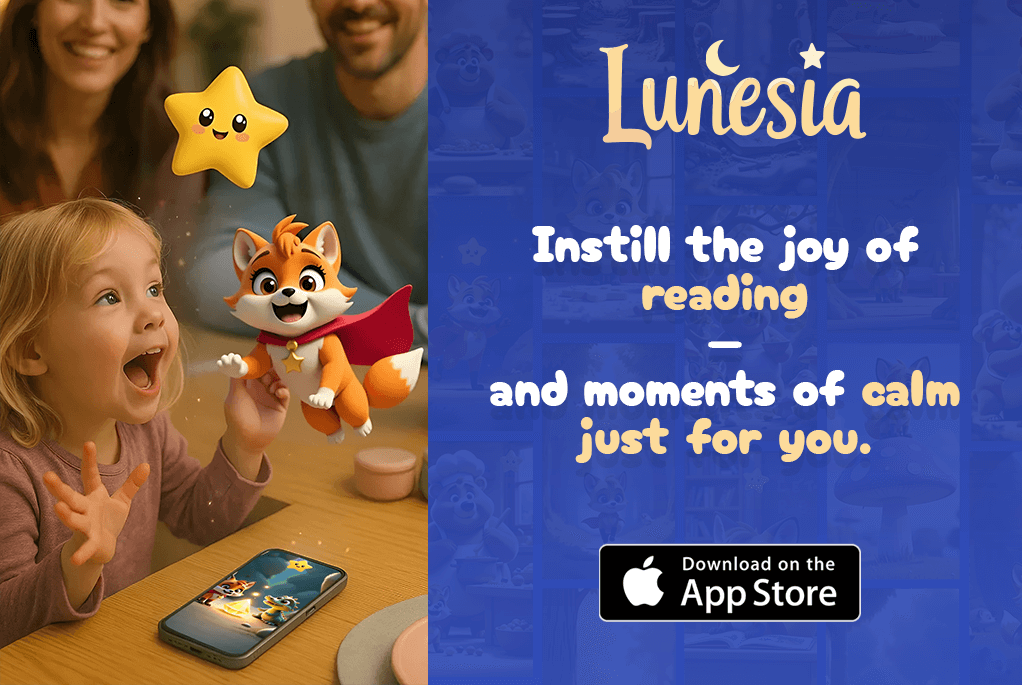Have you ever watched a child’s eyes light up during a story? That spark isn’t just excitement—it’s their brain growing stronger. As a parent and educator, I’ve seen firsthand how stories shape young minds, turning simple tales into powerful tools for growth.

Research shows that storytelling does more than entertain—it builds essential skills like memory, creativity, and problem-solving. For example, studies reveal that children exposed to stories develop richer vocabularies and better comprehension. Their brains stay active, especially in areas linked to critical thinking.
Why does this matter? Because stories act like mental gyms, exercising young learners’ minds while making learning fun. Whether at home or in the classroom, simple story sessions can lay the foundation for academic success and emotional intelligence.
Ready to unlock this potential? Let’s explore how to harness the magic of storytelling—starting today. Discover more ways to boost language skills.
The Science Behind Storytelling and Cognitive Development
Ever wondered why kids remember every detail of a story you told them last week? It’s not just their imagination at work—it’s their brain actively growing. Research shows that listening to stories lights up specific areas of the brain, especially the prefrontal cortex, which is responsible for problem-solving and decision-making.
How Stories Activate the Brain
Think of storytelling as a mental workout. When children listen to narratives, their brain stays engaged, building what I like to call “mental muscle memory.” This sustained activity strengthens their abilities to focus, think critically, and even empathize with others.
NIRS Study: Storytelling vs. Picture-Book Reading
A fascinating study from Fukushima Medical University used NIRS monitoring to compare how children respond to storytelling versus picture-book reading. The results were eye-opening. Storytelling showed sustained prefrontal activation, while picture books led to decreased activity over time. This means stories keep young minds active longer, even after the tale ends.
Sustained Prefrontal Activation in Children
Why does this matter? Sustained prefrontal activation is like building a foundation for future skills. It helps children develop better problem-solving abilities and creativity. Plus, the study found that multicultural stories, like folktales, broaden their perspectives and enhance their imagination.
| Activity | Brain Response |
|---|---|
| Storytelling | Sustained prefrontal activation |
| Picture-Book Reading | Decreased activity over time |
So, the next time you share a story, remember—you’re not just entertaining your child. You’re helping their brain grow stronger. Ready to dive deeper? Explore more about the magic of bedtime stories and their lasting impact.
Enhancing Memory Through Narrative Engagement
What if I told you that stories can be a secret weapon for boosting memory? As a parent, I’ve seen how my child can recall every detail of a story, even weeks later. It’s not magic—it’s the power of narrative engagement.
When kids listen to stories, their brains create “mental hooks” for information. This process, often called the “Velcro theory,” helps facts stick better. For example, a classroom study showed that students remembered historical events more vividly when they were told as stories rather than dates.
The Role of Imagination in Memory Retention
Imagination plays a huge role in how kids retain information. When a child imagines a story’s setting or characters, they’re actively filling in gaps. This strengthens neural pathways, making it easier to recall details later.
One of my favorite activities is the SHICHIDA Method’s “What happened next?” exercise. It encourages kids to predict outcomes, boosting their imagination and memory skills. It’s a fun way to turn passive listening into active engagement.
Sequencing Events for Better Recall
Sequencing is another key factor in memory retention. When kids retell stories, they practice organizing events in order. This not only improves their comprehension but also enhances their ability to recall information.
Try sequencing games with story cards or illustrations. For example, turn a grocery list into a mini-adventure story. This simple activity helps kids build skills while making everyday tasks more fun.
Here’s a quick tip: Avoid over-relying on visual aids. Studies show that kids remember better when they use their imagination to fill in the details. Stories are the perfect tool for this.
“Stories create texture for facts to stick, making learning both effective and enjoyable.”
Ready to boost your child’s memory? Start with bedtime stories. Ask questions, encourage predictions, and let their imagination run wild. But remember, memory is just the beginning—stories also unlock creativity and problem-solving skills.
Fostering Creativity and Problem-Solving Skills
Did you know a simple bedtime story can turn your child into a creative problem-solver? I’ve watched kids redesign “The Three Little Pigs” houses with blocks—their imaginations building real-world abilities. Research shows story-loving kids score 68% higher in problem-solving tasks. Let’s explore how.

Spark Critical Thinking With Open-Ended Questions
Instead of asking, “What color was Cinderella’s dress?” try, “Why do you think she chose blue?”. SHICHIDA’s 30-day program uses such questions to boost critical thinking. Here’s what works best:
- “What if the wolf wasn’t bad?” (Encourages perspective-taking)
- “How might Goldilocks fix the chair?” (Promotes problem-solving)
Extend Stories With Hands-On Activities
Turn tales into training. One parent shared how her child resolved a playground conflict by mimicking a story character’s logic. Try these extensions:
- Engineering challenges: “Build a wolf-proof house with Legos.”
- Story kits: Provide props (e.g., fabric scraps) to reinvent endings.
| Story Structure | Creativity Boost |
|---|---|
| Linear (e.g., “Little Red Riding Hood”) | Strengthens sequential thinking |
| Branching (e.g., “Choose Your Adventure”) | Encourages flexible problem-solving |
“After SHICHIDA’s program, my son started inventing his own story solutions—like using a trampoline to help Jack escape the giant!”
Remember, avoid “right answer” traps. Ambiguous endings (Did the gingerbread man escape?) build tolerance for uncertainty. Ready to turn storytime into skill-building? Let’s explore how these abilities enhance communication next.
Language Development and Communication Skills
Have you noticed how stories can transform a child’s ability to communicate? From expanding their vocabulary to enhancing their listening skills, stories are a powerful tool for language development. Research shows that children exposed to repeated narratives learn new words 40% faster than those who aren’t.
Vocabulary Expansion Through Repetition
Repetition is key to building a strong vocabulary. When children hear the same phrases in stories, they internalize new words more effectively. For example, a study found that repeated exposure to phrases like “wild rumpus” in Where the Wild Things Are helped kids grasp complex language structures.
Try these techniques to maximize language development:
- Create “Word Treasure Hunts” using repeated story phrases.
- Use “echo storytelling” to encourage shy speakers to repeat key lines.
- Compare language gains in bilingual story exposure.
Active Listening and Comprehension
Stories also improve listening and comprehension. When a child actively listens to a story, they practice focusing and understanding context. SHICHIDA’s dialogue-building story circles are a great way to enhance these communication skills.
Here’s how stories boost comprehension:
- They teach sentence structures naturally through rhythm and repetition.
- They encourage children to predict outcomes, improving critical thinking.
- They foster emotional intelligence by helping kids relate to characters.
| Story Activity | Language Skill Enhanced |
|---|---|
| Repetition of phrases | Vocabulary expansion |
| Dialogue-building circles | Communication skills |
| Predicting outcomes | Comprehension and critical thinking |
“Stories are the bridge between words and understanding, helping children connect with the world around them.”
Ready to boost your child’s language development? Start with bedtime stories and explore more about their sleep benefits. Let’s turn storytime into a learning adventure!
Practical Strategies for Parents and Educators
As a parent, I’ve discovered that the right story can unlock endless possibilities for a child’s growth. Whether you’re a parent or an educator, incorporating interactive storytelling techniques can make learning both fun and effective. Let’s explore some actionable strategies to help you get started.

Interactive Storytelling Techniques
One of the most effective methods is SHICHIDA’s 4-phase model: Listen, Discuss, Create, and Apply. This approach ensures that children stay engaged and actively participate in the learning process. Here’s how you can implement it:
- Listen: Start by reading or narrating a story with enthusiasm.
- Discuss: Ask open-ended questions to encourage critical thinking.
- Create: Let the child retell the story or create their own version.
- Apply: Connect the story to real-life situations or activities.
For example, after reading a story about teamwork, ask, “How can we work together to solve this puzzle?” This simple technique fosters both creativity and problem-solving skills.
Choosing Age-Appropriate Narratives
Selecting the right story is crucial for maximizing engagement. Research from NIRS studies shows that story length and complexity should match the child’s age and cognitive abilities. Here’s a quick guide:
| Age Group | Story Type |
|---|---|
| 0-3 years | Board books with simple, repetitive phrases |
| 4-6 years | Picture books with engaging visuals |
| 7+ years | Chapter books with more complex narratives |
Cultural stories, like folktales, can also broaden a child’s perspective. For instance, a Japanese folktale might introduce new values or traditions, enhancing their understanding of the world.
Here’s a tip: If a story doesn’t engage your child, don’t be afraid to switch it up. Sometimes, a simple change in tone or setting can make all the difference. Remember, the goal is to create a positive and enriching experience.
“The right story at the right time can spark a lifelong love for learning and creativity.”
Ready to take the next step? Download our monthly storytelling planner to organize your activities and track your child’s growth. The lifelong impact starts now—let’s make every story count!
Conclusion: The Lasting Impact of Stories on Young Minds
Imagine the long-term benefits of sharing stories with your child—today’s tales shape tomorrow’s thinkers. Research, like the NIRS study, shows that stories keep young minds active, building essential skills for the future. Children exposed to rich narratives often excel academically and develop stronger problem-solving abilities.
Think of stories as mental nutrition, fueling growth in creativity, empathy, and critical thinking. The stories you share today become their inner guide, helping them navigate the world with confidence. Start SHICHIDA’s storytelling program today and see the transformative impact firsthand.
Here are three simple steps to make storytime more effective:
- Ask open-ended questions to spark curiosity.
- Encourage your child to retell the story in their own words.
- Connect the story to real-life situations to reinforce learning.
Every story you tell plants seeds for tomorrow’s breakthroughs. Your voice is their superpower—use it to inspire and empower. Discover the importance of storytelling and watch your child thrive.


